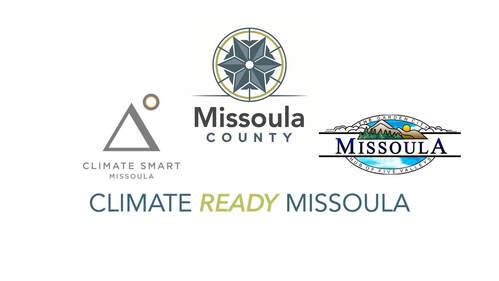Climate change will impact our buildings and transportation systems, and the decisions we make about how and where we build are enormous opportunities to adapt and reduce our contribution to climate change.
What can we do to prepare and build resiliency?
Our community identified several goals and strategies to address Missoula County's buildings, land use, and transportation vulnerabilities given climate change. Each goal and their corresponding strategies are presented below, and you can find strategy-specific implementation details by clicking on its "status."
Balance competing land use needs in the context of population growth.
Strategy |
Status (click for more information on implementation progress) |
Consider, and ultimately incorporate, climate migration in population growth projections in growth policy and other planning efforts. |
|
Ensure that city and county land use plans adequately protect habitat, open space, and agricultural land. |
|
Encourage urban gardens and small-scale agriculture to preserve the ability to grow food in Missoula County. |
|
Protect strategically important private lands with conservation easements and acquisition. |
Reduce development in the floodplain.
Strategy |
Status (click for more information on implementation progress) |
Prevent or restrict new development in the floodplain. |
|
Work with federal partners on education and buy-out programs in floodplain areas where there is a history of repetitive loss. |
NOT YET INITIATED |
Enhance FEMA floodplain maps with climate change projections to be used for local regulatory and educational purposes. |
Reduce cooling costs by increasing efficiency of building stock.
Strategy |
Status (click for more information on implementation progress) |
Develop programs to implement and incentivize more energy efficient building practices (new and retrofits) that are accessible to all socio-economic groups, including weatherization and cool roofs. |
|
Develop an educational campaign to increase consumers' energy efficiency, with a focus on cooling. |
Reduce vulnerability of buildings to wildfire.
Strategy |
Status (click for more information on implementation progress) |
Adopt regulations and programs to address the home ignition zone (structure and surroundings), such as neighborhood ambassadors, Wildland Urban Interface (WUI) building codes, WUI zoning codes, and WUI standards in building, zoning, and subdivision codes. |
|
Restrict and regulate new development in high wildfire hazard areas. |
PRE-PLANNING - Detailed progress report coming soon! |
Levy impact fees and/or use other funding sources to fund fire protection related infrastructure (fire trucks, hydrants, responders, etc.) |
PRE-PLANNING - Detailed progress report coming soon! |
Address urban heat island effect and maintain and grow healthy, diverse urban forests that account for social equity considerations.
Strategy |
Status (click for more information on implementation progress) |
Create incentives and programs to decrease urban heat island effect, for example through building siting, shade and vegetation. |
|
Develop and promote an educational campaign to build shared understanding of value of urban forests and encourage planting appropriate species, watering, and care. |
UNDERWAY - Detailed progress report coming soon! |
Develop and promote an educational campaign to build a shared understanding of the importance of xeriscaping. |
UNDERWAY - Detailed progress report coming soon! |
Ensure sustainable transportation options are part of land use planning and development.
Strategy |
Status (click for more information on implementation progress) |
Support land use regulations and incentives that encourage densities and mixes of uses that allow for and support a wide range of sustainable transportation options. |
UNDERWAY - Detailed progress report coming soon! |
Pursue policies and prioritize funding to achieve transportation mode split goals in the Long Range Transportation Plan, considering population growth projections. |
UNDERWAY - Detailed progress report coming soon! |
Strengthen public transit system to provide safe travel during heat and/or smoke events. |
UNDERWAY - Detailed progress report coming soon! |
Pursue complete street policies and programming that incorporates urban forestry and stormwater management. |
UNDERWAY - Detailed progress report coming soon! |
